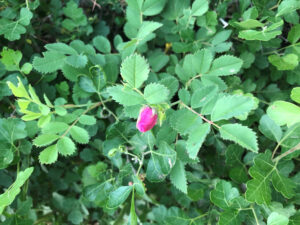
The unhealed pain of disappointment, even destruction, can leave a seemingly open wound within a person or a place. We probably all have a wound or two in our personal landscapes that come to mind.
One need only walk near the burnt trails in Rocky Mountain National Park to experience the great weight of disaster that occurred in that beloved wilderness last year. The charred landscape of the Cameron Peak Fire and East Troublesome Fire scorched approximately 30,000 acres (10 percent) of the park, and consumed human life, structures, wildlife, flora, and fauna.

Experts undoubtedly examine the possibilities of human carelessness or intent, and the consequences of lightning strikes amidst severe drought, downed timber, choked forests, pine beetle infestation, etc., but the raw emotion of loss can’t really be intellectualized. The loss hurts and it hurts bad.
There’s a bleakness to obliteration and the sorrow that comes with it.


But wait . . .
Just when the land and trees seem to have diminished into the black dungeon of ash and soot, Nature rebounds and teaches a certain resilience and promise. Note the lithe and tender green sprouts popping up in the meadows of devastation.

While hiking both sides of the Continental Divide in Rocky Mountain National Park, the mystery of healing seems to emanate all around. Yes, black and scorched skeletons of once bountiful trees stand barren and stripped on the hillsides. Yes, the animals are few and far between in those fire-ravaged places. Yet, beautiful baby shoots of green are emerging from the ash, and yes, even flowers. Wild iris, and yellow snapdragons in the field of green. Perhaps the silver lining to all of this is the promise of healthier forests and new life. Goodness out of darkness.

By forces seemingly antagonistic and destructive Nature accomplishes her beneficent designs – now a flood of fire, now a flood of ice, now a flood of water; and again in the fullness of time an outburst of organic life….
—John Muir
And closer to my home near Deer Creek Open Space, the remnants of fire have not deterred the new growth of scrub oak greenery, white yarrow, and even a pink bud of a wild rose.



Hope springs eternal
—Alexander Pope
Thanks for stopping by. ♥
Muir, “Mt. Shasta” in Picturesque California (1888-1890), Chapter 10, p. 148.

